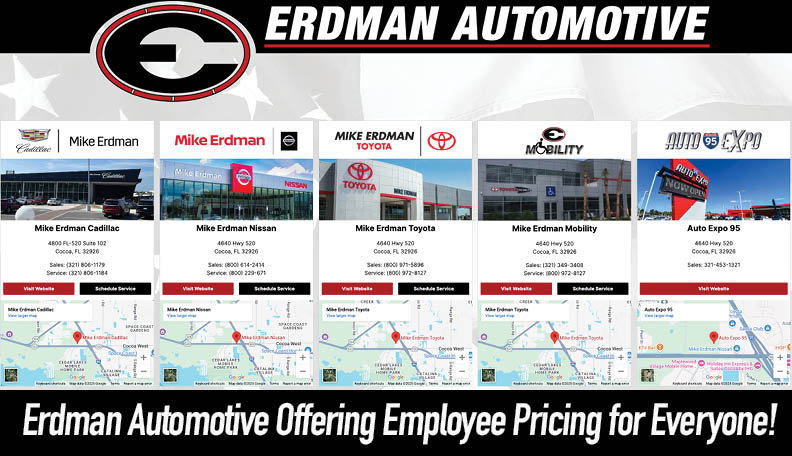Off-Road Ambulances: Important Features and Where to Buy Them
By Space Coast Daily // March 19, 2025

In remote areas, rough terrain, or extreme weather conditions, traditional ambulances often fail to reach patients in need. Off-road ambulances fill this critical gap, enabling emergency medical services to access previously unreachable locations.
These specialized vehicles come in two main formats: modified 4×4 vehicles and UTV-based units, each offering distinct advantages for different emergency scenarios while balancing rugged performance with essential medical functionality.
For instance, consider the advantages of Rowland’s off-road ambulances, which incorporate all-wheel drive systems intended to improve traction and control. All-wheel drive systems enable medical teams to effectively navigate through challenging conditions such as mud and snow. It is also worth noting that these types of vehicles are equipped with fully enclosed aluminum patient compartments, allowing for the secure transport of a full-size cot alongside necessary medical attendants and equipment.
When selecting an off-road ambulance, emergency services must consider both the vehicle’s off-road capabilities and its medical functionality. Leading manufacturers offer customizable options ranging from basic entry-level models to fully loaded high-end versions with advanced features for specific rescue operations.
Key Takeaways
- Off-road ambulances enable emergency medical access to remote locations through specialized 4×4 vehicles or UTV-based designs.
- Essential features include all-wheel drive systems, enclosed patient compartments, and customizable medical equipment options.
- Quality off-road ambulances balance terrain capabilities with medical functionality for effective emergency response.
Essential Features of Off-Road Ambulances
Off-road ambulances require specialized features to operate effectively in challenging environments while maintaining critical medical capabilities. These vehicles combine rugged performance with essential medical functionality to ensure successful rescue operations in remote or difficult terrain.
All-Terrain Capabilities
Off-road ambulances are built on robust 4×4 chassis platforms, providing superior handling and stability on challenging terrain. Most models feature all-wheel drive systems that enhance traction and control, allowing the vehicle to navigate through mud, snow, and rough terrain with confidence.
Increased ground clearance is crucial for clearing obstacles and traversing uneven surfaces without damaging the undercarriage. All-terrain tires with aggressive tread patterns provide better grip on loose surfaces and slippery conditions.
Many units include front bullbars to protect the vehicle from damage when navigating through dense brush or debris. Electric winches are standard equipment, enabling self-recovery or assisting other vehicles when stuck.
Air intake snorkels elevate the engine’s air intake point, allowing safe passage through moderate water crossings without risking engine damage. The Toyota Hilux Revo serves as a popular base vehicle due to its proven reliability in extreme conditions.
Patient Compartment Specifications
The patient compartment in off-road ambulances must balance space efficiency with functional medical capability. These compartments typically accommodate a full-size cot with secure locking mechanisms to prevent movement during rough travel.
Climate control systems are designed to operate effectively in temperatures ranging from -40°C to +40°C, ensuring patient comfort in extreme environments. Specialized mounting brackets and restraint systems secure medical equipment during transit over rough terrain.
All aluminum patient compartments offer durability while reducing overall weight, improving fuel efficiency and off-road performance. Compact but efficient equipment storage solutions maximize the available space for critical supplies.
Reinforced cabinet structures prevent contents from shifting during extreme manoeuvres. Advanced lighting systems incorporate both bright treatment lights and red night vision options to maintain night adaptation during extended operations.
Durability and Customization
Purpose-built off-road ambulances incorporate reinforced frames and specialized suspension components to handle the additional stress of rough terrain operation. These vehicles often feature modular designs that allow for easy repair and replacement of damaged components in remote locations.
Specialized coatings protect external surfaces from corrosion, abrasion, and exposure to extreme environmental conditions. Heavy-duty alternators and dual battery systems provide reliable power for both vehicle and medical equipment needs.
Customization options allow agencies to configure vehicles based on specific regional challenges and mission profiles. Some models offer interchangeable modules that can transform the vehicle from an ambulance to other emergency response configurations.
Pickup truck chassis often serve as the foundation for these customized builds, offering an ideal balance of durability, versatility and parts availability. The most capable models feature reinforced undercarriage protection and enhanced cooling systems for sustained operation in extreme conditions.
Procurement and Application of Off-Road Ambulances
Acquiring the right off-road ambulance requires careful consideration of terrain requirements, budget constraints, and operational needs. These specialized emergency vehicles serve critical functions in locations where conventional ambulances cannot reach.
Sourcing Reliable Off-Road Ambulances
Several reputable manufacturers specialize in off-road ambulances, including Rowland Emergency, ASAP UTV Ambulances, and WAS. These companies offer custom-built solutions tailored to specific requirements.
When selecting a provider, evaluate their experience with similar deployments and after-sales support capabilities. Request detailed specifications about the vehicle’s terrain capabilities, patient compartment design, and durability ratings.
Many manufacturers offer demonstration options before purchase. This allows emergency services to test vehicles in conditions similar to their operational environment.
Ask about customization possibilities for specific needs. Options might include enhanced heating for Arctic conditions or specialized cooling systems for desert operations.
Consider total cost of ownership, not just purchase price. Maintenance requirements, parts availability, and fuel efficiency significantly impact long-term operational costs.
Operational Considerations in Diverse Conditions
Off-road ambulances must function reliably in challenging environments. All-wheel drive systems are essential for navigating through mud, snow, and rough terrain while maintaining stability during patient transport.
Ground clearance specifications should match the most difficult terrain in your service area. Most quality off-road ambulances feature enhanced suspension systems to improve patient comfort during transport over bumpy terrain.
Electronic features like reverse cameras and exterior emergency lighting systems improve safety during challenging operations. Power supply systems (typically 110V or 230V) ensure medical equipment remains functional even in remote areas.
Cold weather operations require additional heating systems and battery protection. Hot environments may necessitate enhanced cooling for both patient compartment and medication storage.
Proper training for operators is crucial. Driving techniques for off-road ambulances differ significantly from standard road vehicles.
Versatility for Various Events
Off-road ambulances serve diverse scenarios beyond traditional emergency response. They provide medical support at outdoor sporting events, concerts, and festivals where conventional vehicles struggle with field access.
UTV ambulances excel at servicing remote worksites such as mining operations, forestry projects, and oil fields. Their compact size allows navigation through narrow tracks while still carrying essential medical equipment.
During natural disasters, these vehicles navigate flood waters, debris fields, and damaged infrastructure to reach patients. Some models include specialized attachments for water fording or snow traversal.
Search and rescue operations in wilderness areas benefit from the extended range and terrain capabilities. Many units feature specialized equipment storage for rope rescue gear, extraction tools, and extended care supplies.
Community outreach in rural areas becomes more feasible with vehicles designed to reach isolated populations regardless of road conditions. This improves healthcare access for underserved regions.
Where to Buy Off-Road Ambulances
If you’re looking for a reliable off-road ambulance for emergency response in remote or rugged environments, here are five suppliers to consider:
1. Rowland Emergency
Why Consider It? Rowland Emergency specializes in high-performance emergency vehicles, including off-road ambulances designed for rugged terrain. Their vehicles are customized for medical response teams operating in challenging environments, ensuring durability, reliability, and advanced medical capabilities.
2. Patriot Campers – X1 Ambulance
Why Consider It? Known for their high-quality off-road trailers, Patriot Campers also offers emergency response vehicles tailored for extreme environments. Their X1 Ambulance model is a compact but highly capable option for remote medical response.
3. Aceray Emergency Vehicles
Why Consider It? Aceray provides off-road ambulances specifically designed for disaster relief and remote healthcare services. They focus on 4×4 conversions of existing medical transport vehicles, ensuring smooth travel in harsh conditions.
4. Global Emergency Vehicles (GEV)
Why Consider It? GEV offers a range of off-road ambulances suitable for military, disaster relief, and rural healthcare services. Their inventory includes both new and refurbished vehicles with customization options for different terrains.
5. Med-Tek Ambulance Solutions
Why Consider It? Med-Tek specializes in modifying ambulances for specialized needs, including off-road and rough terrain applications. They offer a variety of models built on durable chassis like Ford, Mercedes, and Toyota for enhanced off-road capability.
These companies provide off-road ambulances tailored for remote medical emergencies, search-and-rescue operations, and rugged terrains.
Conclusion
Off-road ambulances provide essential medical services in remote locations where traditional vehicles cannot safely operate. Their specialized features—including robust 4×4 drive systems, enhanced suspension, and terrain-specific tires—enable lifesaving response in challenging environments.
When purchasing an off-road ambulance, organizations should carefully assess their specific regional needs, patient transportation requirements, and available budget. Both modified 4×4 vehicles and UTV-based units offer distinct advantages depending on terrain challenges and equipment needs.
These specialized vehicles significantly improve emergency response times in rural communities and wilderness areas, potentially saving lives that might otherwise be unreachable. For emergency medical services covering extensive rural territories, the investment in off-road capabilities represents a critical component of comprehensive healthcare delivery.












